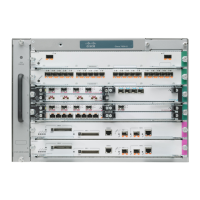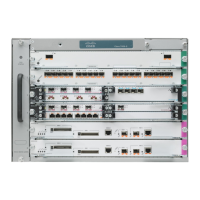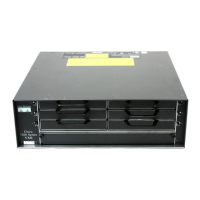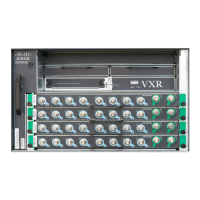14-12
Cisco 7600 Series Router Cisco IOS Software Configuration Guide, Release 12.2SX
OL-4266-08
Chapter 14 Configuring VLANs
Configuring VLANs
Assigning a Layer 2 LAN Interface to a VLAN
A VLAN created in a management domain remains unused until you assign one or more LAN ports to
the VLAN.
Note Make sure you assign LAN ports to a VLAN of the appropriate type. Assign Ethernet ports to
Ethernet-type VLANs.
To assign one or more LAN ports to a VLAN, complete the procedures in the “Configuring LAN
Interfaces for Layer 2 Switching” section on page 10-6.
Configuring the Internal VLAN Allocation Policy
For more information about VLAN allocation, see the “VLAN Ranges” section on page 14-2.
Note The internal VLAN allocation policy is applied only following a reload.
To configure the internal VLAN allocation policy, perform this task:
When you configure the internal VLAN allocation policy, note the following information:
• Enter the ascending keyword to allocate internal VLANs from 1006 and up.
• Enter the descending keyword to allocate internal VLAN from 4094 and down.
This example shows how to configure descending as the internal VLAN allocation policy:
Router# configure terminal
Router(config)# vlan internal allocation policy descending
Command Purpose
Step 1
Router(config)# vlan internal allocation policy
{ascending | descending}
Configures the internal VLAN allocation policy.
Router(config)# no vlan internal allocation
policy
Returns to the default (ascending).
Step 2
Router(config)# end
Exits configuration mode.
Step 3
Router# reload
Applies the new internal VLAN allocation policy.
Caution You do not need to enter the reload command
immediately. Enter the reload command
during a planned maintenance window.

